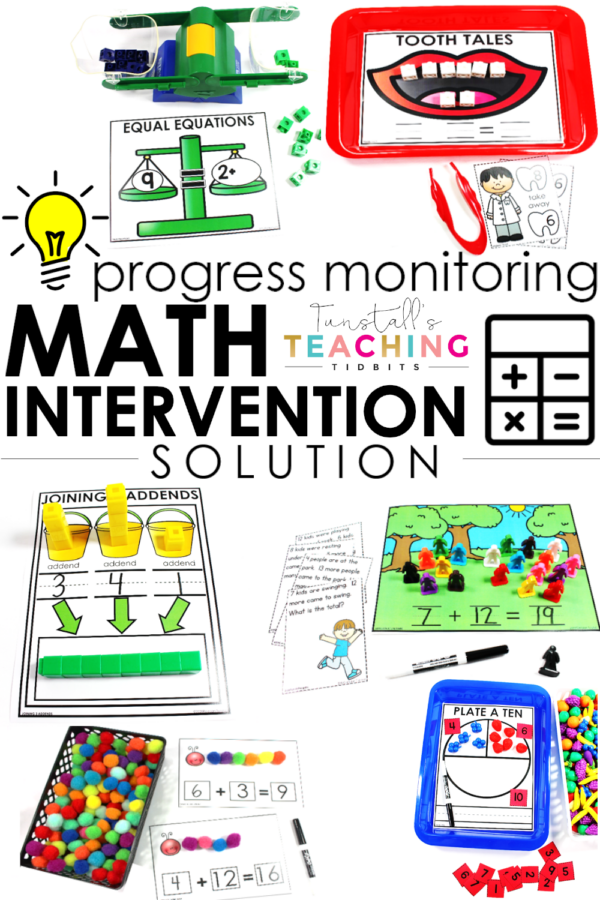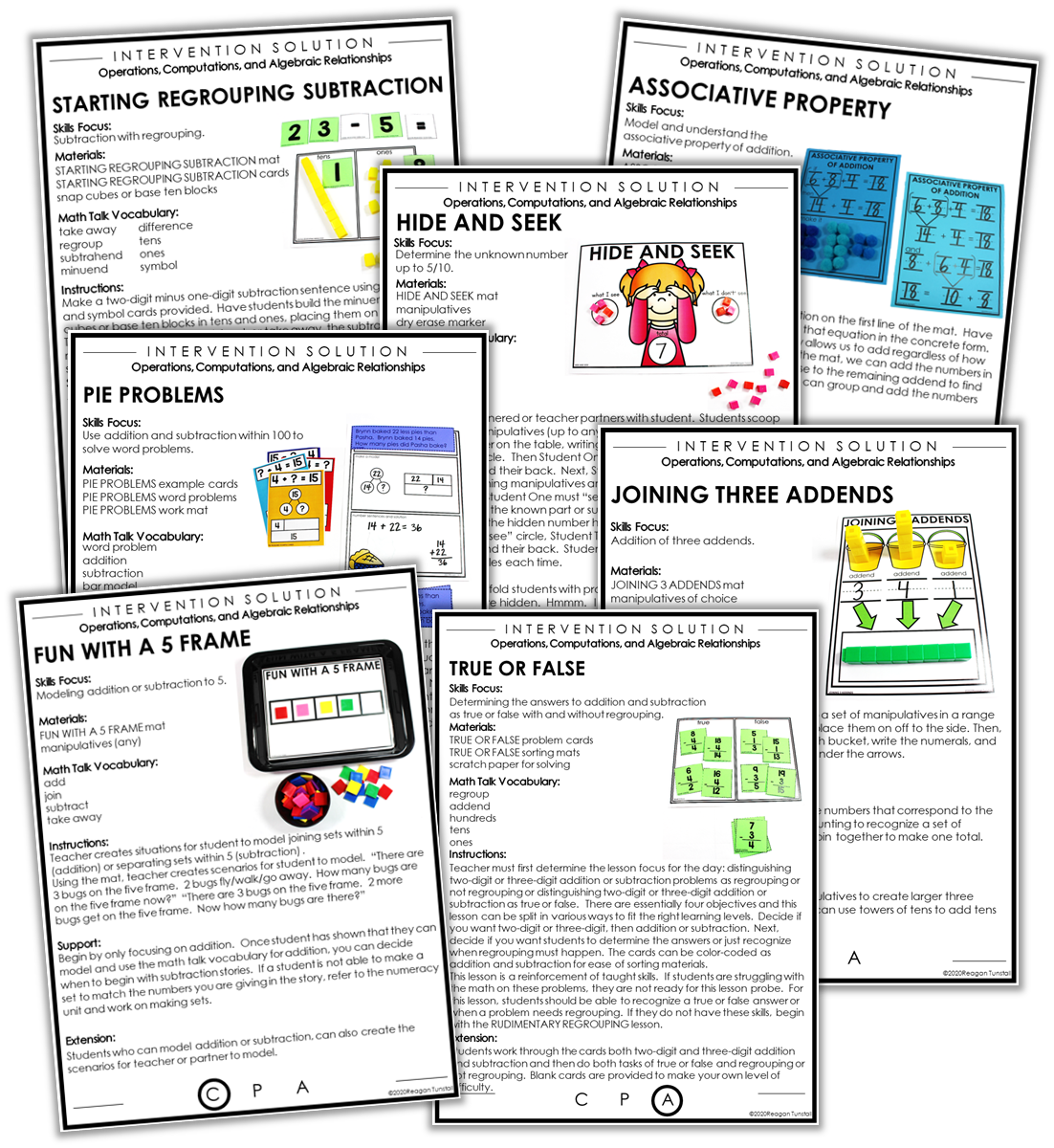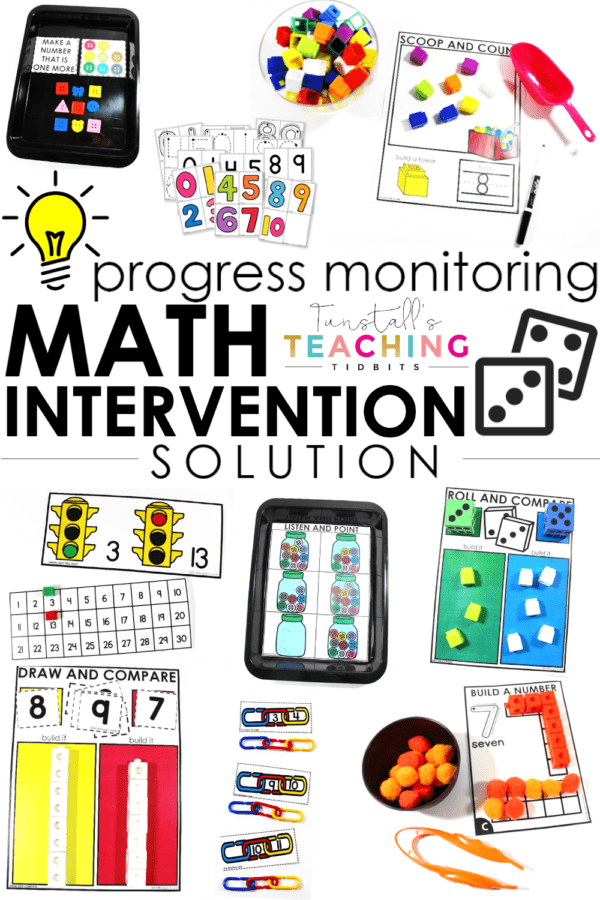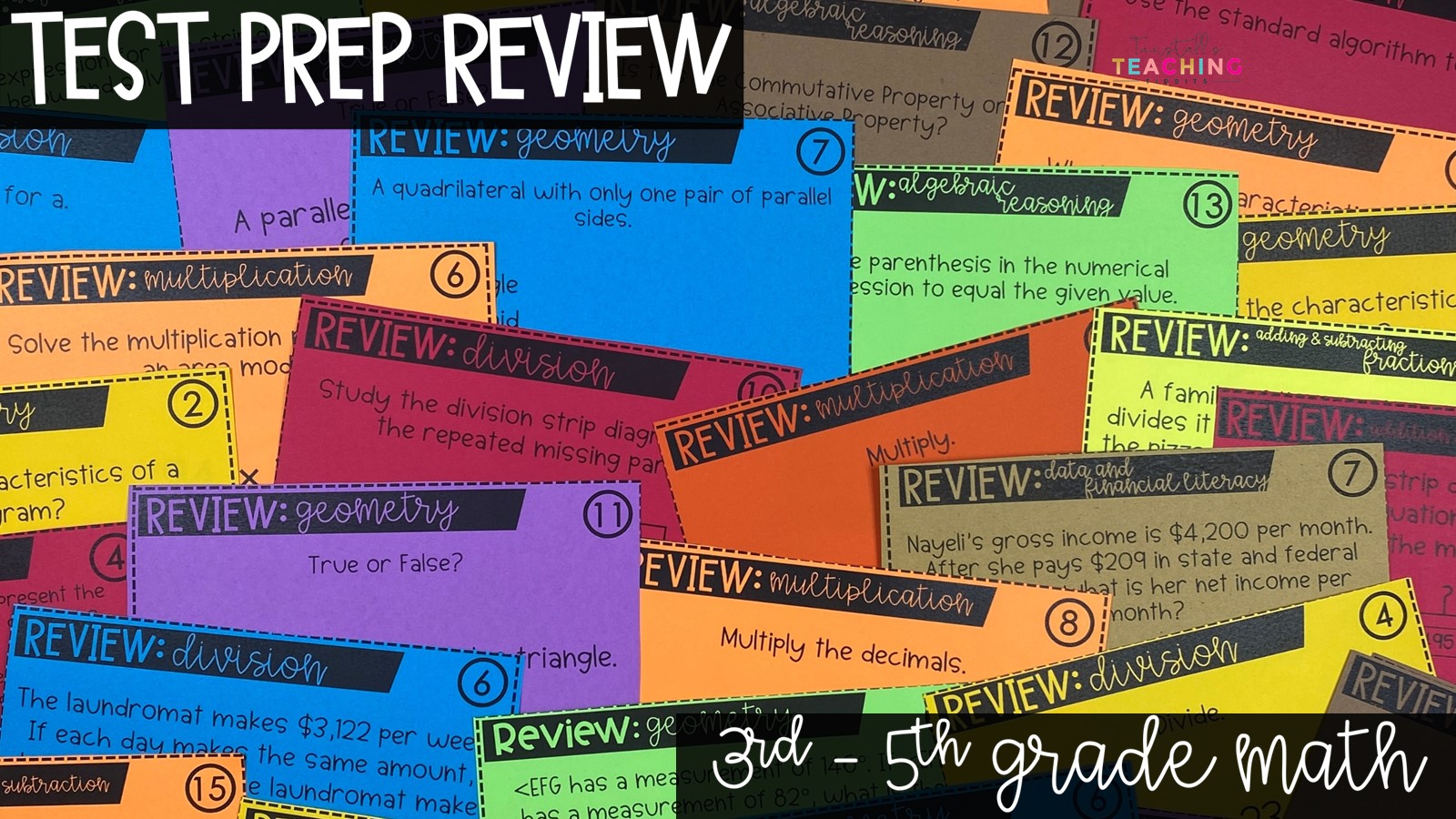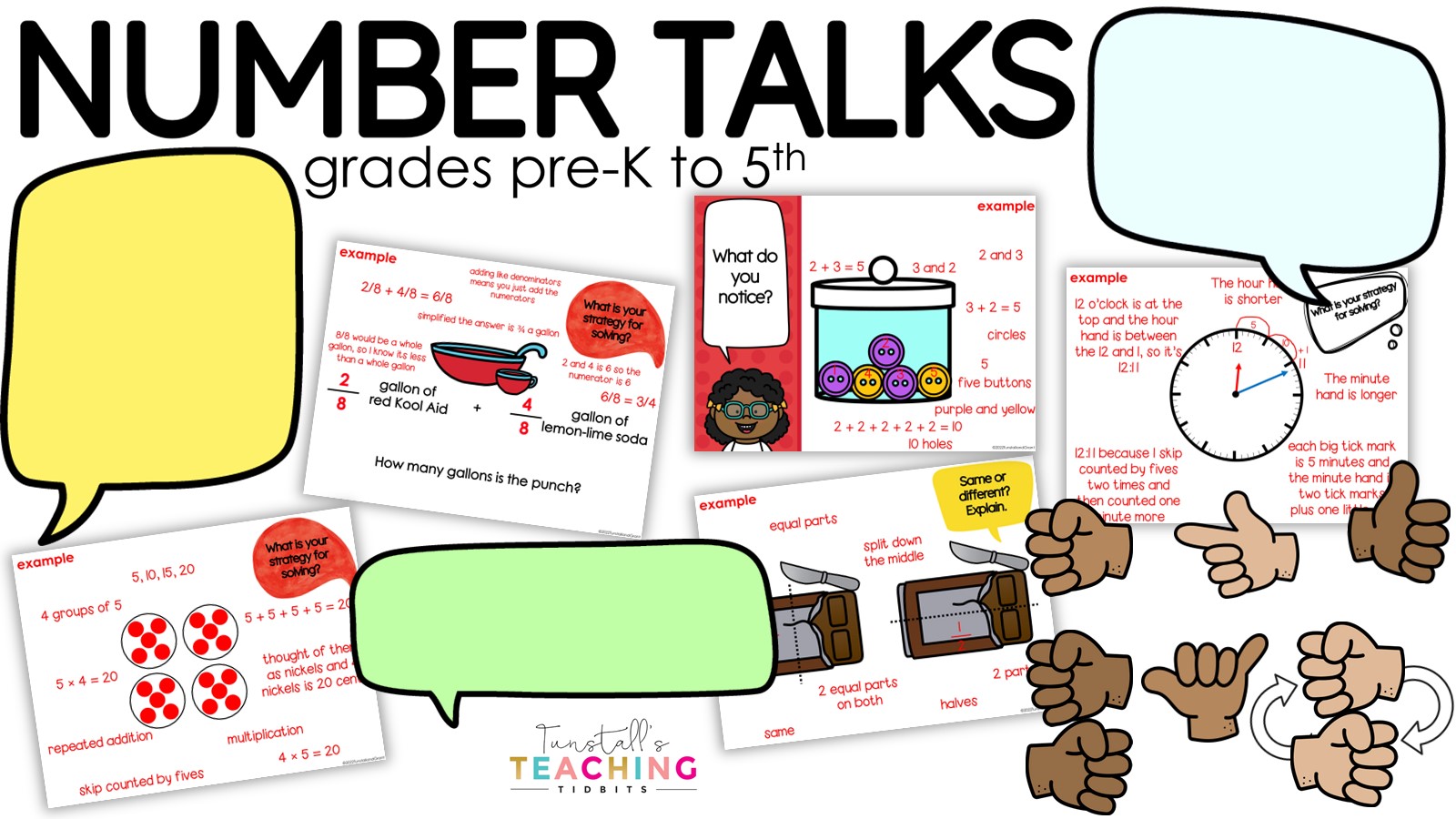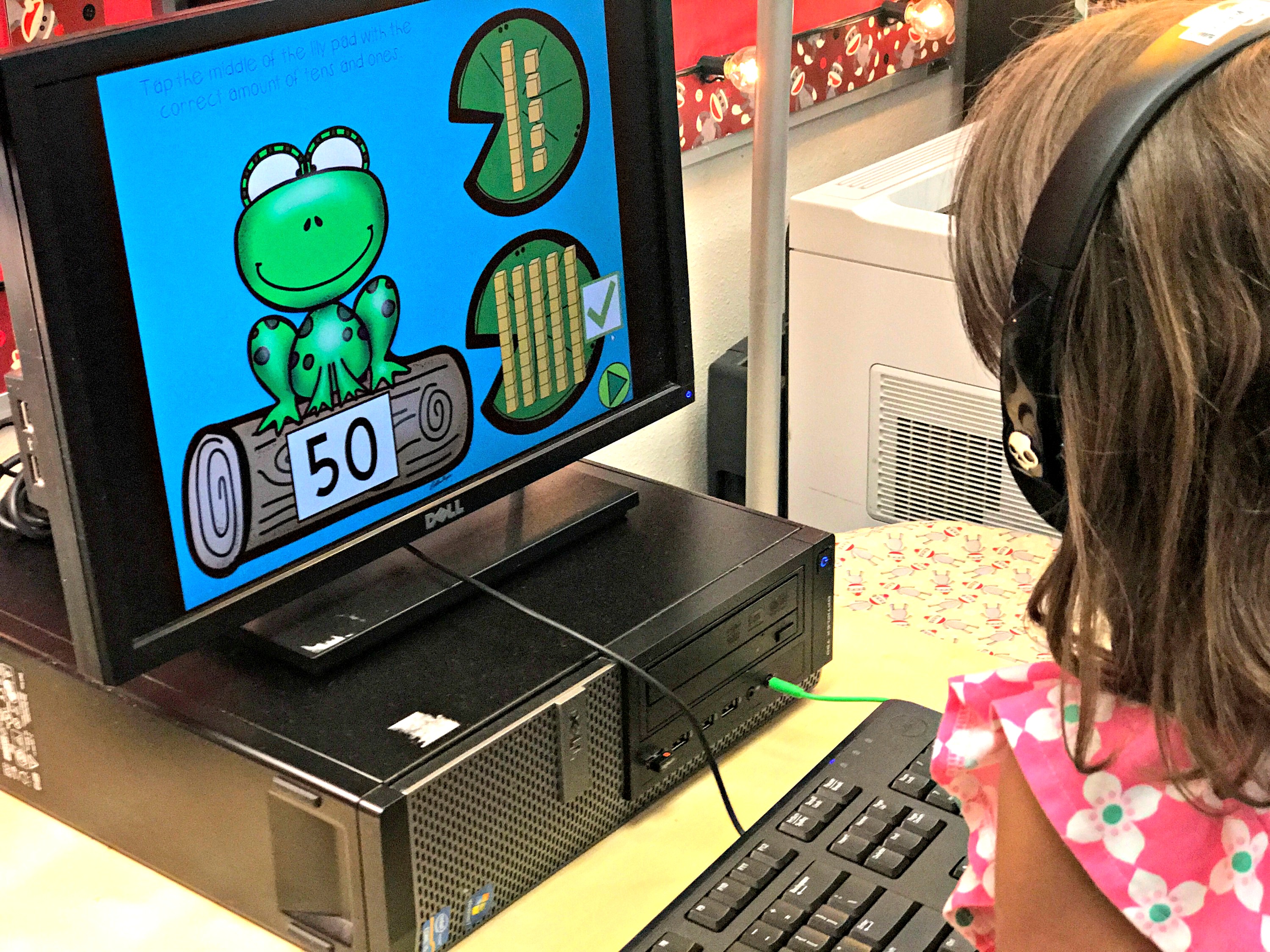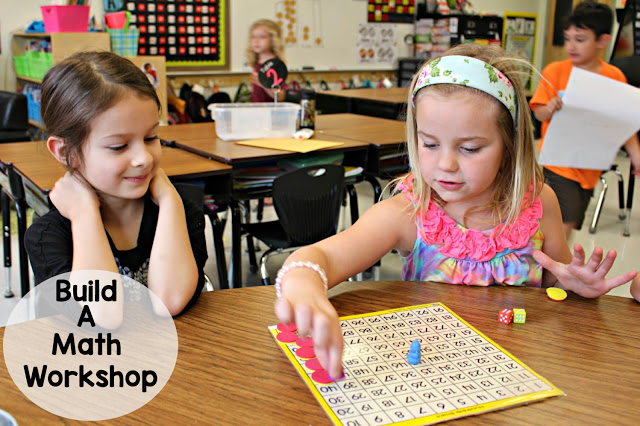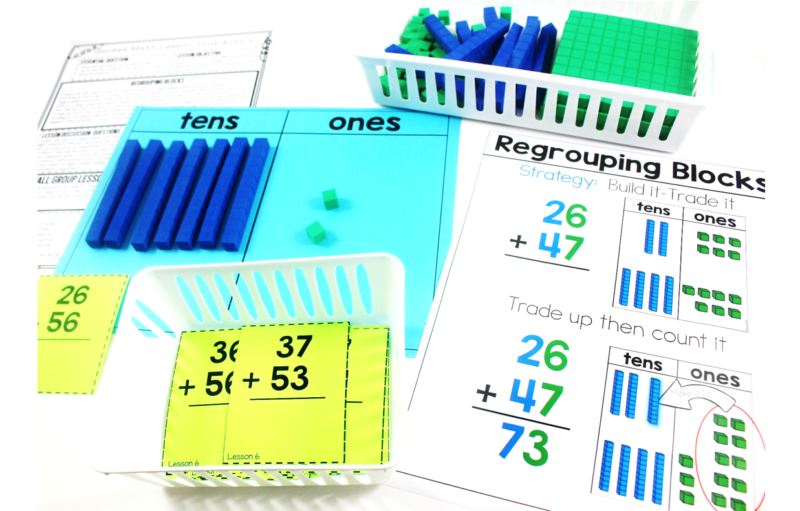Intervention for Operations, Computations, and Algebraic Relationships

Beginning in their primary years, students continually develop computation skills throughout their journey on the math continuum. This math milestone is multi-faceted taking years to master. As their teachers, we can set students on an empowered confident path of mastery including intervention for operations, computations, and algebraic relationships. However, these skills require prerequisite understanding in the area of number sense, counting, and cardinality.
Intervention for Operations, Computations, and Algebraic Relationships
In this post, we will focus on progress monitoring for operations, computations, and algebraic thinking ranging from addition and subtraction to 5/10/20/100/1000. This solution is one part of an extensive year-long Response to Intervention progress monitoring system for standards ranging from Pre-K to Second Grade. In other words, it covers a wide range of grade levels and skills. In this unit, we not only focus on students who are struggling but also those who need enrichment as well.
Understand vs. Memorize
First off, it is important to recognize mastering basic facts takes the labor and pressure out of new learning. When students have basic facts memorized, they save important time and energy during new learning experiences. Likewise, students can take in the new procedures and steps in solving without the anxiousness of keeping up with the understanding of basic computations.
For this reason, time and attention to memorizing math facts is an important part of this math strand. The problem is sometimes this skill is the only skill used to measure the understanding of the computation math strand. This is not an accurate measure of these skills. Simultaneously, we want students to have a deep understanding of how numbers work together. Students will be able to express understanding about how and why numbers work together. They will be able to think critically about how and why they come to the solutions. These skills are just as important if not more important than knowing math facts.
Intervention Solution
Moreover, below you can find inspiration on how to create meaningful math interactions for all students in the area of operations, computations, and algebraic reasoning. This intervention program allows teachers to effectively provide differentiated intervention for all levels of learners with progress monitoring built right in. For instance, this resource provides differentiated tools to support both teachers and students.
How Does It Work?
Intervention Solution is an instructional resource series that uses the CRA or CPA: Concrete, Representational (Pictorial), and Abstract theory of child development. Students move through developmental stages of learning from concrete hands-on experiences to visual or pictorial understanding, and ultimately to numbers and symbols referred to as abstract.
Each Intervention Solution lesson has the Concrete Pictorial Abstract clearly marked. Subsequently, this is to help the teacher better instruct students at their current level and help bridge them to the next one. In short, this classification of CPA allows the teacher to work with the child using the developmental stages of math understanding.


Lessons for Every Student
Above all, the intervention setting allows students to build understanding. Students are exposed to multiple methods for solving. Therefore, this exposure allows students to experience adaptive reasoning. Through these components, students receive differentiated instruction with the teacher, collaborate with peers to reason and reflect, and have the independent application of math concepts. Thus, these three ways of engagement allow students to flourish through many modalities.
The Standards
The standard alignment guides correlate the standard, the description of the skill, and the lesson probes that address those standards. In fact, the standards are from Pre-K through second grade. Common Core State Standards and Texas TEKS are addressed.
Vocabulary and Math Talk
To continue, this resource also ties in instructional research. Small group lessons allow students to have deeper conversations, risk-free exploration of concepts, and targeted and differentiated instruction. Therefore, through the use of this resource, students will experience authentic math discoveries within a small group of peers.

What’s Included in Intervention for Operations, Computations, and Algebraic Relationships?
To sum up, this resource includes the following:
- Research and Rationale
- Labels for Organization
- Standards Alignment CCSS and TEKS
- Over 50 Lesson Probes including 300+ pages of lessons and materials
- Academic Vocabulary Visual Cards
- Word Stems for Math Talk
- Math Tools
- Progress Monitoring Tools
- Skills Assessments
More in this series
Subsequently, you can read more about math intervention in other math strands by visiting this post.

 Contact Us
Contact Us